In 1999 I compiled a 'best of' collection of mostly political audio clips from my KPFK collection. I was reminded of this one from Louis Farrakhan when Obama won the Presidency last night.
louis-farrakhan-black-president.mp3
.
Culture Is Our Business
In 1999 I compiled a 'best of' collection of mostly political audio clips from my KPFK collection. I was reminded of this one from Louis Farrakhan when Obama won the Presidency last night.
louis-farrakhan-black-president.mp3
.
It's great to see people taking the issues and statements the candidates have made seriously. Andrew Allemann of DomainNameWire.com took the time to track down the Obama and McCain policy statements and put together some hard questions for each of them.
From DifficultDebate.com
The 2008 election for President of the United States has nothing to do with who's wearing a flagpin and lipstick on a pig, but that's what the media is focusing on. Sadly, that's what the campaigns seem to focus on too.
This web site is dedicated to asking the difficult questions of our candidates. They're specific. They can't be dodged. And they aren't based on heresay.
The basis for these questions are the candidates' own plans. Not rumors. I read through the plans on each site and had questions about many of the candidates' stances and how they specifically plan to accomplish them.
Some of these may be easy to answer, but they certainly aren't explained well on the candidates' web sites.
I'm an independent and undecided voter who likes some of what each candidate has to say. But I'm not getting the answers I need from the mainstream press.
From WorldChanging.com
this article was written by Jeremy Faludi in June 2007. We're republishing it here as part of our month-long editorial retrospective.
 Google Transit was already the best thing that ever happened to online public transit trip planning, and now it's grown to a whole new level. Even better, it's starting to be incorporated into the default Google Maps and Google Earth. The new features and the integration into normal map queries will make public transit more accessible and easier for everyone to understand; and in doing so, it will certainly increase transit ridership and reduce driving.
Google Transit was already the best thing that ever happened to online public transit trip planning, and now it's grown to a whole new level. Even better, it's starting to be incorporated into the default Google Maps and Google Earth. The new features and the integration into normal map queries will make public transit more accessible and easier for everyone to understand; and in doing so, it will certainly increase transit ridership and reduce driving.
One of the big barriers to public transit use is the knowledge required to use the system: where to wait, when to wait, where to transfer, how much to pay, etc. Some readers may remember that two years ago we helped cause Google Transit to happen, but it's taken off far beyond what we had suggested, and they keep getting better. What's more, they're doing it at no charge to the transit agencies (a perpetually under-funded sector of local governments). More cities are coming on board, as well; if you live in one of the eleven cities now participating, enjoy! If you live elsewhere, consider writing to your local transit agency and telling them to join the 21st century. (ahem… San Francisco, right in Google's back yard, no excuse… ahem.)
What are these tools? In addition to being able to type in your route and get comprehensive directions (including walking to stations, showing the bus or train route, walking directions between stations, how much it costs, etc.), you can plan trips by departure or arrival time and see when the next couple buses come if you miss the one you're aiming for. Now, if you zoom in enough on any Google map in the right city, all the transit stops appear, with different icons for bus, light rail, etc.; click on a bus stop and up pops a list of the buses or trains that stop there; click on the bus number, and up pops the timetable for the next several buses stopping there.
Here's a summary of the new features, with screenshots, right from the horse's mouth–Thomas Sly, a business development manager on the project. (Note the screenshots are small for bandwidth reasons; for real-size ones, give it a spin yourself on the real site.)
From WorldChanging.com
This article was written by Micki Krimmel in June 2007. We're republishing it here as part of our month-long editorial retrospective.
 I first learned about MAPLight.org at the recent NetSquared Conference. As I wrote last week, the conference attendees chose MAPLight as the winner of the first prize NetSquared Innovation Award. In a crowd of extremely well-deserving projects, MAPLight stood out as an organization applying the best of Web 2.0 technology and standards to create a vital tool for transparency in democracy.
I first learned about MAPLight.org at the recent NetSquared Conference. As I wrote last week, the conference attendees chose MAPLight as the winner of the first prize NetSquared Innovation Award. In a crowd of extremely well-deserving projects, MAPLight stood out as an organization applying the best of Web 2.0 technology and standards to create a vital tool for transparency in democracy.
MAPLight.org brings together campaign contributions and how legislators vote, providing an unprecedented window into the connections between money and politics. We currently cover the California Legislature and U.S. Congress.
Maplight has been receiving a fair amount of attention lately and the $25k prize will help them take their project to the next level, providing the funds for them to create customized widgets for bloggers and nonprofit organizations to share up to date information on their websites automatically. MAPLight is also working to expand their service to other states, with New York next on the list.
I chatted with Sean Tanner, Maplight's Research Manager via email to get a little more insight into Maplight's mission and future particularly as America turns its attention to the next Presidential election. As Research Manager, Sean coordinates the MAPLight.org database and research internship program. He is also the chair of the Young Advocates, a group of young professionals who support the work of Human Rights Watch.
Micki Krimmel: Can you tell me a little bit about the mission of MAPLight and its origins?
Read the rest of the article.
This from Berkman Center For Internet & Society New Media analyst, Hal Roberts. Fascinating blog post on using Google's new Insights For Search tool to extract, well… insights.
One of my guiding theories of the modern media / advertising landscape is that the extensive real time surveillance of consumers by online advertisers and content providers encourages the growth of content about digital cameras (the content about which is easily monetized) at the expense of hard news, especially international news about developing countries like Nigeria.
The following google insights chart of digital camera v. Nigeria searches over time strikes a blow against that theory:
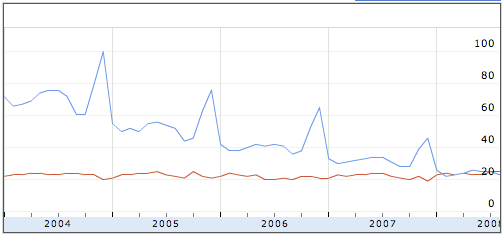
Read the rest of the post here
.
See also!!!
From WorldChanging's Ethan Zuckerman
I'm wondering what other pockets of "undesirable" behavior are mappable via this technique. For instance, searches for "keygen", a popular site that offers serial numbers and software keys to enable pirated software shows a heavy concentration the former Warsaw Pact nations, with some strength in Southeast Asia as well.

See Also!!!
From Andrew Chen's blog.
Netvibes is California only – perhaps this is a good candidate for an early-adopter-only crowd?

Here's a couple of my own.
American Idol (red) vs. Global Warming (blue).
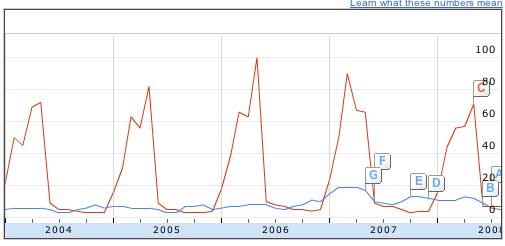
Batman (red) vs. Darfur (blue).
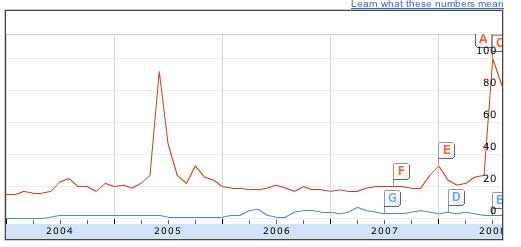
From ScienceBlogs.com
Originally Posted on: July 17, 2008 10:11 AM, by Mo
In the January 4th, 1961 episode of One Step Beyond, director and presenter John Newland ingests psilocybin under laboratory conditions, to investigate whether or not the hallucinogenic mushroom can enhance his abilities of extra-sensory perception.
The programme was apparently inspired by a 1959 book called The Sacred Mushroom, by parapsychologist Andrija Puharich, who is known for taking the spoon-bending fraudster Uri Geller to the United States for investigation.
In the first part of the programme (embedded below), Newland, Puharich and others travel to Mexico to collect mushroom samples. They then return to Puharich's lab in Palo Alto, where Newland's ESP abilities are tested before and after ingestion of several mushroom stems.
The programme is of historical interest, as it was made some years before the widespread use of LSD led researchers to stop conducting psychedelic research. It therefore includes a brief mention of the potential therapeutic effects of psilocybin for psychiatric patients.
Parts 2 and 3 of the episode are also available on YouTube.
———————-
"And then, oddly enough, the first sound we hear as the chemical in the mushroom takes effect is… laughter."
This video is a lot of fun and introduced me to Andrija Puharich, who wrote The Sacred Mushroom: Key to the Door of Eternity (1959). UCLA research psychologist Barbara Brown (who invented biofeedback), also makes the trip down to Mexico. But it is most fascinating to see the show's host, John Newland in an on-camera lab setting, have his extrasensory perception skills tested under the influence of mushrooms. Really makes me wonder where we might be now if science had continued to have access to these substances.
But I wonder if Thelma Moss ever met John Newland through Barbara Brown who was also at UCLA. I found one clip on the net that connects Moss and Brown… "In Prague I was warmly and hospitably received by Dr. Rejdak, who is perhaps the most active parapsychologist in Czechoslovakia. In the company of two other Ameri cans, Dr. Thelma Moss and Dr. Barbara Brown, we were shown films of recent experiments in the telepathic trans mission of taste impression on a hypnotic subject. I'm not sure why I'm even curious but somehow it's interesting. Another connection to this whole cast of characters is Uri Geller. As mentioned above, Andrija Puharich was responsible for bringing Uri Geller to the US for experiments. You can easily find Uri connections to Thelma Moss and Barbara Brown.
Original Post by David Pescovitz, June 23, 2008 11:03 AM
George Lakoff is well known as a cognitive linguist who looks at how language affects culture, specifically how much the metaphors we use impact the way we think. During the last presidential election, he grabbed a lot of attention with his book Don't Think of an Elephant: Know Your Values and Frame the Debate, about how Republicans are masters at "framing" debates to their benefit. His new book, The Political Mind, explores the same territory but in the context of cognitive science. The New York Times reviewed The Political Mind yesterday and it sounds fascinating. From the NYT:
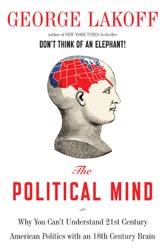
Lakoff blames "neoliberals" and their "Old Enlightenment" mentality for the Democratic Party's weakness. They think they can win elections by citing facts and offering programs that serve voters' interests. When they lose, they conclude that they need to move farther to the right, where the voters are.
This is all wrong, Lakoff explains. Neuroscience shows that pure facts are a myth and that self-interest is a conservative idea. In a "New Enlightenment," progressives will exploit these discoveries. They'll present frames instead of raw facts. They'll train the public to think less about self-interest and more about serving others. It's not the platform that needs to be changed. It's the voters.
The basis of Lakoff's theory is simple: the mind is the brain. Any connection that forms between your thoughts also forms between your neurons. As you internalize a metaphor, a circuit in your brain "physically constitutes the metaphor." This parallel development continues as mental complexity increases. "Narratives are brain structures," he proposes.
Link to NYT review, Link to buy The Political Mind: Why You Can't Understand 21st-Century American Politics with an 18th-Century Brain
Previously on BoingBoing:
"¢ George Lakoff on how to argue with conservatives Link
"¢ George Lakoff on why the conservatives seem to be winning Link
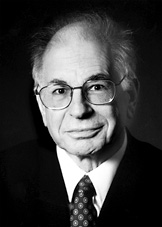 RIP Danny. Thank you for your insights and stories. I'm glad of the opportunity to know your work. You made a difference.
RIP Danny. Thank you for your insights and stories. I'm glad of the opportunity to know your work. You made a difference.
[Update 9/8/2010 A paper Danny co-authored, "Income's Influence on Happiness" has just been released.]
… the bat costs $1 more than the ball. How much does the ball cost? Daniel Kahneman KNOWS that the first thought that entered your head was $.10–even if you're a Computer Science major at MIT. But that's the wrong answer.
Daniel Gilbert's "Stumbling On Happiness" led me to Nicholas Taleb's "Fooled By Randomness". Both books cite the work of Danny Kahneman. I blogged a bit about him here. I have been rummaging around the internet looking for whatever I can find on Danny and his work and have come up with some excellent content. But let me give you a taste of the sort of fascinating facts you'll hear in Danny's lectures first.
In a study Danny (I don't know him personally but after listening to all these lectures, I feel as though I do. He could no doubt name the cognitive bias this suggests) mentions in one of his talks, people are asked how much pleasure they derive from their car. They are then asked enough questions about the car to determine its blue book (resale) value. It turns out that there IS a correlation between the amount of pleasure the subject reported and the dollar value of the car. i.e. Yes, that late model BMW in the garage DOES give you more pleasure than my 20 year old Honda would. BUT! They then go on to ask the subject if they find their commute to work pleasurable, and guess what?– nobody does!. It turns out that the ONLY time people derive pleasure from their car is when they are THINKING about it.
From Wikipedia:
With Amos Tversky (Kahneman's longtime research partner, with whom he would have shared the Nobel prize had Tversky not died in 1996) and others, Kahneman established a cognitive basis for common human errors using heuristics and biases (Kahneman & Tversky, 1973, Kahneman, Slovic & Tversky, 1982), and developed Prospect theory (Kahneman & Tversky, 1979). He was awarded the 2002 the Nobel Prize in Economics for his work in Prospect theory.
Major Contributions:
Media – Most of these lectures have a fairly long-winded intro. Skip ahead if you don't need the background info.
Explorations of the Mind – Well-Being: Living and Thinking About It. (YouTube)
Conversation With History – Intuition and Rationality. (YouTube)
Conversation With History – Intuition and Rationality. (Audio)
Explorations of the Mind – Intuition: The Marvels and the Flaws. (YouTube)
Nobel Prize Lecture. (YouTube)
Update March 2009- Kahneman and Taleb on the same stage discus the crash. (YouTube)
Update March 2010. From the February 2010, Ted Talk Daniel Kahneman: The riddle of experience vs. memory. (YouTube)
Found a few more DK links.
A Perspective on Judgment and Choice 24pg. PDF doc. on the subject of his Nobel Prize.
The Allais Paradox Wired magazine 10/10 (Archive)
.
 If you want to be a dentist, it's rational to assume that if you go to school, get your degree, and set up a dental practice, you will be able to attain a comfortable standard of living. You may be able to project your probable income range with some degree of accuracy.
If you want to be a dentist, it's rational to assume that if you go to school, get your degree, and set up a dental practice, you will be able to attain a comfortable standard of living. You may be able to project your probable income range with some degree of accuracy.
But if you want to be a rock star, it's irrational to assume that if you go to rock school, get good at guitar, and start a band, you will become rich and famous.
According to Nassim Nicholas Taleb's way of thinking, the dentist and the wannabe rock star fall into two distinct categories with drastically different risk characteristics. The dentist falls into the domain he calls 'Mediocristan', and the rock star, 'Extremistan'. Extremistan is dominated by 'fat tails', or rare but profoundly significant events. Problems arise when we think we're operating in Mediocristan but in fact are operating in Extremistan."Karl Marx wanted to turn knowledge into action, what I want to do is turn our lack of knowledge into action". Taleb suggests that by becoming aware of our own ignorance, we can stop taking action where our action is irrational.
I'm on my second reading of Fooled By Randomness and am very much looking forward to The Black Swan. In the meantime I've been hunting down all the audio I can find on Taleb because his talks are extremely interesting and he is a very engaging speaker. He has a bit of attitude when addressing an audience, in part no doubt because much of what he has to say offends of lot of people, especially anyone whose expertise is related to forecasting. He has obvious disdain for financial forecasters in particular, probably because he sees the impact these 'guys in suits riding around in limousines' have on the lives of 'people taking the subway to work everyday' (i.e.pensions).
What Taleb has to say has resonated with me at a very deep level. Much of the facts and studies he brings to light confirm my long lingering suspicion that something about the way the world sees itself is profoundly inaccurate and weirdly irrational.
I've listened to each of these talks at least a half dozen times and every time I do I take away another profound insight. Be sure to check out Taleb's Home Page as well.
Taleb on EconTalk.org April 30, 2007
LongNow Lecture-The Future Has Always Been Crazier Than We Thought Feb. 4, 2007
And from PopTech 2005:
Nassim Nicholas Taleb is not afraid to say "I don't know." In fact, he's proud of his ignorance. A mathematician, philosopher and hedge-fund manager all in one iconoclastic package, Taleb demonstrates the wisdom in admitting the limitations of our knowledge.
.
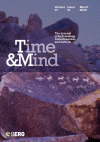 A lot of noise on the internet today around a recently published article in a new journal called Time and Mind by cognitive psychology professor Benny Shanon on the subject of Moses and Entheogens.
A lot of noise on the internet today around a recently published article in a new journal called Time and Mind by cognitive psychology professor Benny Shanon on the subject of Moses and Entheogens.
Abstract:
A speculative hypothesis is presented according to which the ancient Israelite religion was associated with the use of entheogens (mind-altering plants used in sacramental contexts). The hypothesis is based on a new look at texts of the Old Testament pertaining to the life of Moses. The ideas entertained here were primarily based on the fact that in the arid areas of the Sinai peninsula and Southern Israel there grow two plants containing the same psychoactive molecules found in the plants from which the powerful Amazonian hallucinogenic brew Ayahuasca is prepared. The two plants are species of Acacia tree and the bush Peganum harmala. The hypothesis is corroborated by comparative experiential-phenomenological observations, linguistic considerations, exegesis of old Jewish texts and other ancient Mideastern traditions, anthropological lore, and ethnobotanical data.
The entire 25 page article can be downloaded for free from here (scroll down to bottom of page, if the pdf link stops working let me know in the comments, I have a copy.)
| ayahuasca | peyote | magic mushrooms |
| Utah High Court OKs Non-Indian Peyote Use New York Newsday – Jun 23 2004 |
|
| American Indian church leader sues Utah officials over 2000 peyote raid KATC – Apr 28 2005 |
|
| 'Medicine man' arrested on peyote charges Centre Daily Times – Jun 24 2005 |
|
| Study: Religious peyote use not harmful to American Indians KESQ – Nov 4 2005 |
|
| Charges dropped vs. couple in peyote case Macon Telegraph – Feb 23 2006 |
|
| Netherlands bans magic mushrooms TREND Information – Oct 12 2007 |
See Also:
This is an article in two parts. The first part discusses current research in psychoactive preparations of ergot in various religious systems with a particular emphasis on Persian, Greek, Jewish and Islamic sources.
Incense is psychoactive: Scientists identify the biology behind the ceremony.
 Fun, Bob-meets-Discordia web magazine Anxiety Culture. Great graphics too.
Fun, Bob-meets-Discordia web magazine Anxiety Culture. Great graphics too.
The cliché, "never put off until tomorrow..", can be reversed for people who worry about problems. It's always better to postpone worrying. An effective postponement device is the "˜worry sheet', which is a piece of paper for writing down your problem/worry as it occurs – so you can forget it now, and deal with it at some later date. Minor worries can be postponed indefinitely.
Rather than putting off life's pleasures until after you've solved all your problems (ie after you're dead), you postpone all the worrying until after you've finished having a good time.
Mind Hacks is a collection of probes into the moment-by-moment workings of our brain with a view to understanding ourselves a little better and learning a little more, in a very real sense, about what makes us tick. It's by Tom Stafford and Matt Webb, and published by O'Reilly.
And from the Mind Hacks Blog: In 1997, BBC science programme Horizon broadcast a legendary edition on the use of psychedelic drugs in medicine. Luckily, it's been uploaded to Google Video and you can now watch the whole thing online. Read more…
 TV Ontario produces a lecture format show featuring heavy thinkers. You can subscribe here. I'm posting links to a particular show I found especially illuminating on the subject of micro-financing and a new book, 'A Billion Bootstraps' by Eric Thurman. Here's the mp3 lecture but check out TVO's Big Ideas Past Episodes page – hundreds of hours of pro audio lectures from the likes of Deepak Chopra,and Naomi Klein, as well as many you've not heard of before.
TV Ontario produces a lecture format show featuring heavy thinkers. You can subscribe here. I'm posting links to a particular show I found especially illuminating on the subject of micro-financing and a new book, 'A Billion Bootstraps' by Eric Thurman. Here's the mp3 lecture but check out TVO's Big Ideas Past Episodes page – hundreds of hours of pro audio lectures from the likes of Deepak Chopra,and Naomi Klein, as well as many you've not heard of before.